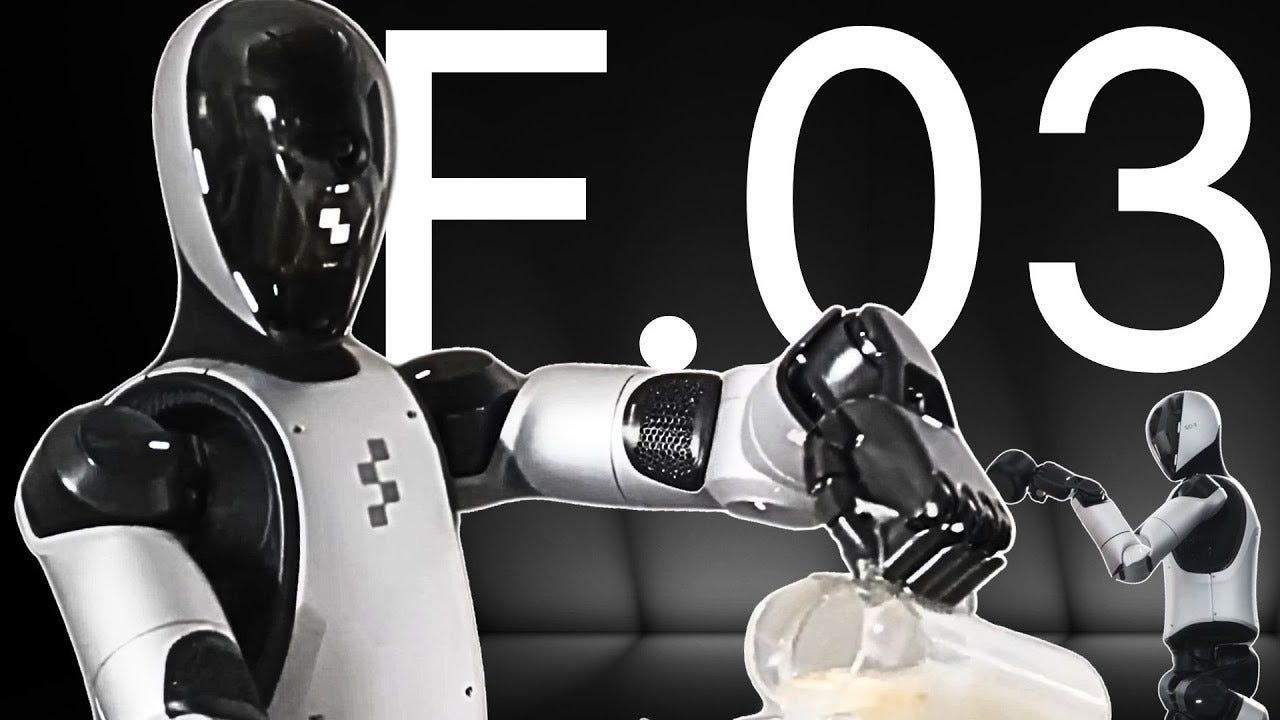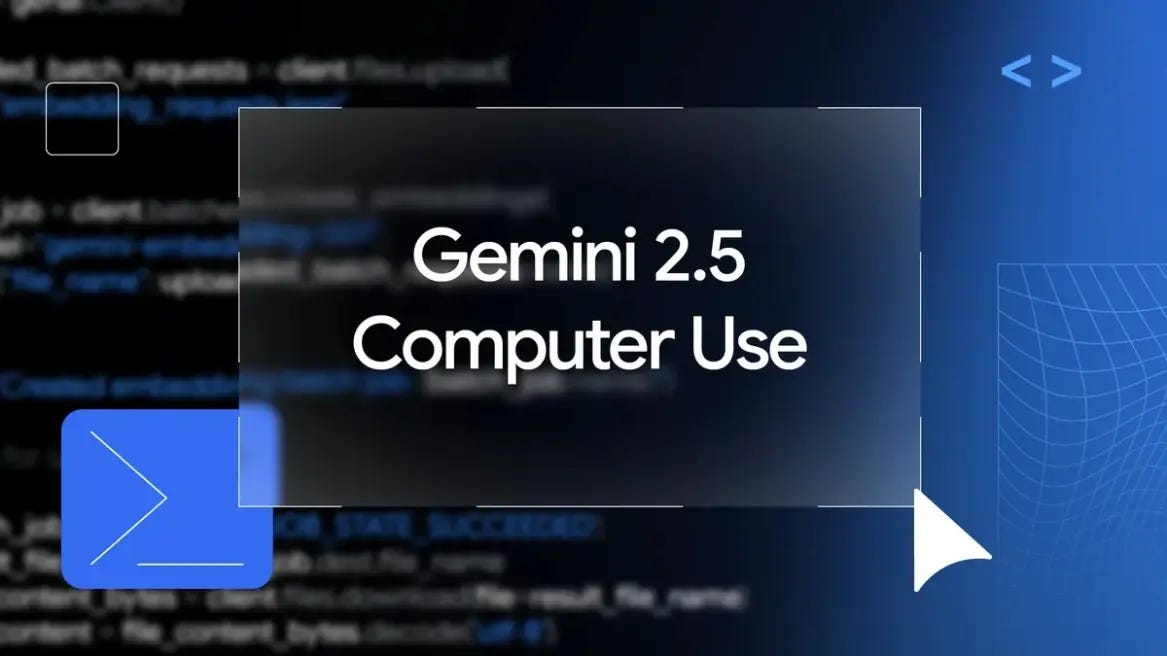$2 Billion for Freedom: Reflection AI’s Open-Source Counterstrike
The company’s mission is simple but ambitious: build transparent, open-source models capable of competing with China’s DeepSeek.
Good morning AI entrepreneurs & enthusiasts,
Reflection AI just secured a massive $2B funding round led by Nvidia, marking one of the largest AI raises of the year and signaling a new phase in the open-source AI race. Its mission - to build powerful, open foundation models that rival China’s DeepSeek - has positioned it as the West’s most serious challenger in global AI dominance.
This raise represents more than a financial milestone; it’s a strategic move in the escalating competition between open and closed ecosystems. Reflection AI’s open architecture approach could reshape how foundation models are developed, shared, and deployed across the world.
In today’s AI news:
Reflection AI raises $2b to challenge DeepSeek
Figure 03 unveils mass-producible humanoid robot
Google releases Gemini 2.5 Computer Use
Samsung’s Tiny Recursion Model (TRM) out-reasons massive LLMs
REFLECTION AI 💰 Reflection AI raises $2B to challenge DeepSeek
News: Reflection AI, a U.S.-based startup, just raised $2 billion in a massive funding round led by Nvidia, vaulting its valuation to $8 billion and establishing it as one of the year’s most heavily backed AI firms.
Details:
Nvidia contributed $800M to the round, joined by high-profile backers including Eric Schmidt, Citi, 1789 Capital, Lightspeed, and Sequoia.
The new $8B valuation reflects a sharp increase from its $545M mark during a $130M raise in March 2025.
Reflection AI‘s focus is on open-source AI models and tools for automating software development—positioning itself against proprietary tech from Meta and OpenAI.
Founders Misha Laskin and Ioannis Antonoglou argue the U.S. must respond to DeepSeek’s growing global share of open foundation models.
Why it matters: This funding surge makes Reflection AI a key Western rival to DeepSeek, intensifying global AI competition and reflecting the rising demand for open, customizable AI platforms. The investment momentum also suggests the open-source movement may be gaining mainstream traction across the AI industry.
FIGURE 03 🤖 Figure unveils mass-producible humanoid robot
News: Figure has officially launched the Figure 03, a third-generation humanoid robot designed for scalable, real-world deployment across homes, factories, and commercial spaces.
Details:
Powered by “Helix,” Figure’s proprietary vision-language-action model, Figure 03 processes real-time visual input, language commands, and physical responses to perform household and workplace tasks.
ts redesigned vision system captures at double the previous frame rate with a 60% wider field of view. Upgraded hands include palm-mounted cameras and tactile fingertip sensors for precision handling of delicate or oddly shaped items.
Figure 03 can wirelessly recharge via a specialized mat, allowing for seamless integration into daily environments.
Built from the ground up using die-casting and injection molding, Figure 03 will be assembled at the company’s “BotQ“ factory—targeting 12,000 units annually, scaling to 100,000 within four years.
Why it matters: Figure 03 bridges the gap between prototype and product with practical, scalable design. Its human-safe form factor, rapid learning AI, and robust hardware ecosystem could accelerate humanoid robot adoption in both homes and enterprises.
GOOGLE 🖱️ Google releases Gemini 2.5 Computer Use
News: Google has officially launched Gemini 2.5 Computer Use, a specialized AI model designed to control web browsers by clicking, typing, scrolling, and navigating user interfaces just like a human. It’s now available through the Gemini API in Google AI Studio and Vertex AI for developers.
Details:
Gemini 2.5 receives a user prompt, a screenshot of the current web environment, and recent action history, then generates UI actions (like clicks and keystrokes) iteratively until a task is complete.
It outperforms OpenAI’s Computer Using Agent and Anthropic’s Claude Sonnet 4.5/4 on web and mobile benchmarks with lower latency and higher accuracy.
The model underpins agentic products like Project Mariner and AI Mode, enabling autonomous browser-level control.
Early demonstrations include automating CRM updates, managing online boards, and conducting cross-site research—all without structured APIs.
Why it matters: Gemini 2.5 Computer Use represents a major step toward practical agentic computing. By directly interacting with user interfaces, it opens the door to automating countless digital workflows—from form submissions and scheduling to research and web navigation—without the need for human input or developer-built integrations.
SAMSUNG AI RESEARCH 🧩 Samsung’s Tiny Recursion Model (TRM) out-reasons massive LLMs
News: Samsung’s Tiny Recursion Model (TRM), developed by researcher Alexia Jolicoeur-Martineau at Samsung’s Advanced Institute of Technology (SAIT) in Montreal, is a compact AI model with just 7 million parameters that’s outperforming giants like DeepSeek R1, OpenAI’s o3-mini, and Google’s Gemini 2.5 Pro on advanced reasoning tests.
Details:
Despite being roughly 10,000x smaller than leading LLMs, TRM achieved about 45% accuracy on the ARC-AGI-1 benchmark—matching or surpassing much larger models.
The key breakthrough lies in its recursive reasoning architecture: a two-layer neural network that refines its answers through iterative loops instead of generating them in a single pass.
TRM’s adaptive halting mechanism determines when to stop refining an answer, balancing accuracy and efficiency.
Researchers say the model’s efficiency enables reasoning performance that rivals billion-parameter models while consuming minimal compute and training data.
Why it matters: TRM represents a paradigm shift away from scale-driven AI development toward architecture-driven intelligence. By focusing on smarter reasoning systems instead of larger models, Samsung’s approach demonstrates how innovation in recursive logic can produce powerful, low-resource AI models—potentially redefining the economics of advanced reasoning in AI research.
🛠️ Trending Tools
CData Connect AI — real-time data connectivity layer with MCP compatibility
Gemini 2.5 Computer Use — agents that navigate your UI
Grok Imagine v0.9 — xAI’s image/video generation update
Google Opal — build apps using natural language
📰 Everything else
OpenAI’s Sora app recorded 627,000 downloads in its first week, ranking No. 3 on the U.S. App Store. While it trailed behind ChatGPT’s debut (81K day-one downloads) and Google’s Gemini (80K), Sora outperformed Claude and Copilot and tied Grok for day-one installs. Its focus on AI-powered video and creative social experiences sets it apart from text-based AI apps.
Anthropic announced plans to open its first India office in Bengaluru in early 2026, expanding its APAC presence and targeting India’s fast-growing AI developer ecosystem.
Zendesk launched a new AI agent system capable of resolving up to 80% of support tickets autonomously, combining multiple specialized sub-agents to manage end-to-end issue resolution.
Thanks for reading this far! Stay ahead of the curve with my daily AI newsletter—bringing you the latest in AI news, innovation, and leadership every single day, 365 days a year. See you tomorrow for more!




